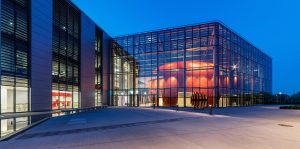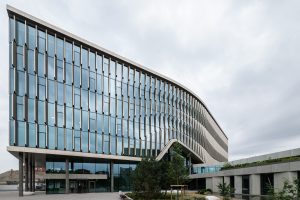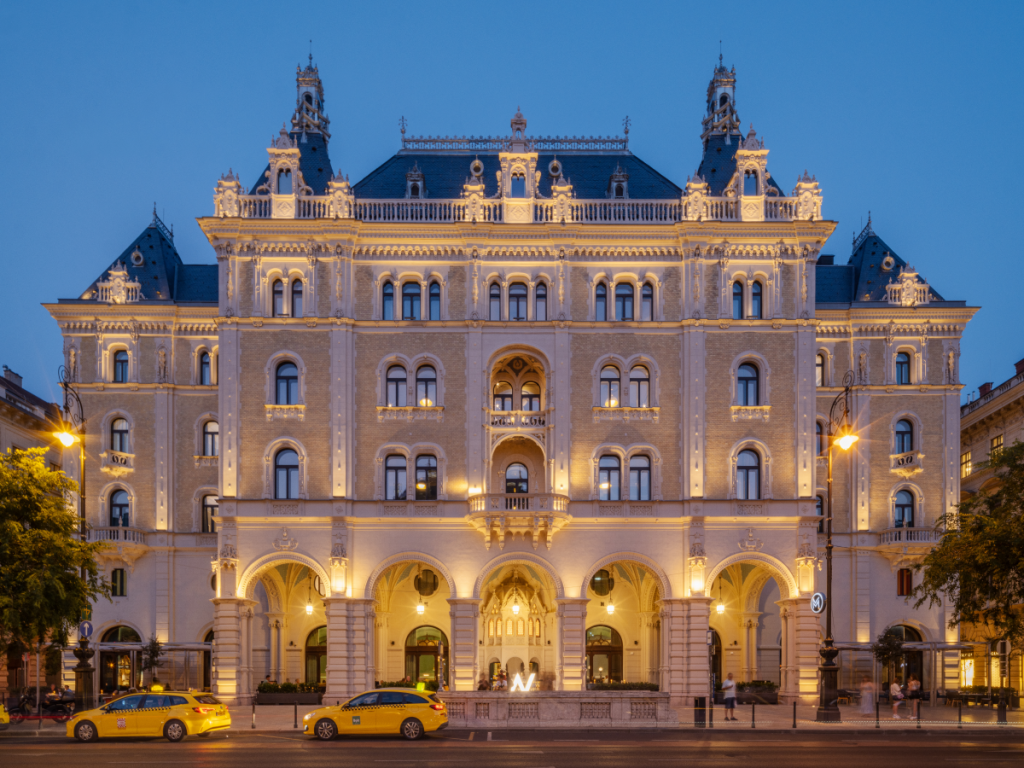How to Take the Operation of Smart Buildings to Another Dimension? Mastering Building Automation!
Founded in 2000, Elektro-Kamleithner Kft. has specialized in building automation from the very beginning, focusing primarily on the KNX system with efficiency and success. Today, the question is no longer whether automation is necessary, but rather what type of system and how sophisticated it should be in order to reduce energy consumption while complying with future regulations. We spoke with Zoltán Balogh, Managing Director of Elektro-Kamleithner Kft., about the development of the KNX standard and the intricacies of sustainable building operation. Balogh Zoltánnal, az Elektro-Kamleithner Kft. ügyvezető igazgatójával beszélgettünk a KNX szabvány kialakulásáról és a fenntartható épületüzemeltetés rejtelmeiről.
– Let's start with what building automation actually means, as with the advancement of digitalization, properties are slowly coming to life on their own, aren't they?
– The concept of building automation is not new, but over the past 28 years, it has been called by various names. Initially, it was referred to as a building management system, later as an intelligent building, and today the term 'smart building' has become more common. In English, 'smart building' is appropriate, but in Hungary, the term 'okosépület' (smart building) is not always clearly understood. Building automation or smart building solutions encompass the entire operation of a building, including basic engineering, HVAC systems, cooling and heating, shading, the supervision of distribution panels, elevators, and the integration of other mechanical or electrical equipment into a single, compact system.
This requires a lot of hardware, as many devices are needed to control various systems within the building. Of course, all these devices must be unified into a single system that includes a visualization interface. It is impossible to efficiently manage a building of tens of thousands of square meters without management software that displays all functions: current parameters, settings, energy consumption, error messages, etc., while also logging everything. Later, the logged data can be used to create graphs that help make predictions and identify further energy-saving opportunities.
– How did the idea to focus on building automation come about, considering that twenty years ago, the technology was still in its infancy, and the commercial real estate market in Hungary was also quite underdeveloped?
– Elektro-Kamleithner Kft. was established in its current form in 2000, but I have been involved in building automation since 1996. That was when I started working at Kamleithner Budapest, which represented four German electrical manufacturers in Hungary, two of which were involved in building automation: Berker and Theben. At the time, they were working with a manufacturer-independent system called EIB (European Installation Bus), which has been known as KNX since 2000. Berker was one of the five manufacturers that created this standard. Since then, Elektro-Kamleithner has primarily focused on KNX.
– How did their activities expand over time?
- In addition to the initial 4 manufacturers, we have expanded our portfolio with 6-8 more, and now we are working with 10-12 manufacturers who produce various devices for building automation. We continue to work with KNX to this day because it is a widely adopted standardized system in Europe, Asia, North America, and Australia. More than 500 manufacturers create different devices for the system, ensuring that new solutions and devices will always be available. KNX is a communication protocol and platform through which devices from any manufacturer can operate with products from other manufacturers.
Projects we completed in the late 1990s and early 2000s are still successful today, which means that the typically German products provide a guarantee for decades of trouble-free operation. However, as time progresses, updates and new features may be necessary, as, for example, twenty years ago, solutions like sub-controls for family homes or advanced functions required for large office buildings were not available. Older systems can, however, be upgraded by adding new functionalities.

– Today, the most important concepts in the real estate market are sustainability and energy efficiency. How are these aspects realized in building automation?
– We approach sustainability from two aspects. The first is that the automated building should be sustainable, meaning that the energy consumed is reduced to the absolute minimum. Automation does not mean alternative energy production but aims to reduce the use of existing energy, which can result in savings of up to 30%. The other side of sustainability, which is less often discussed, is that while a building automation system can achieve a 30% savings, if the system itself is not sustainable—for example, if the devices stop working, break down, or need replacement after five years—then the building will not be sustainable either. Therefore, it is essential to use devices that can operate for decades. Buildings are not designed for 5-10 years, so the equipment and electronic systems used should also be designed for a lifespan of several decades.

– How important is the role of innovation in building automation?
– Manufacturers continuously monitor the market, study the needs and opportunities, and accordingly always strive to offer innovative new devices and solutions. Since we are dealing with a standardized protocol, new devices can be seamlessly integrated into systems that are even 20-30 years old, allowing us to always use the most modern equipment. This means that those who purchased such systems 20 years ago are not left behind either, as older solutions can be updated by simply adding a few new devices.
– Which projects from the past few years would you highlight as important for the company?
– Over the past 20-30 years, we have worked on a wide variety of buildings, from luxury family homes to industrial halls, hotels, and office buildings. Some of the outstanding references from recent years include the Bosch offices and industrial halls, the new Richter Gedeon office building, and the W Budapest Hotel, which opened last year. We are also proud of the Szeged Laser Research Institute, whose system continues to function perfectly to this day, although new ideas occasionally need to be implemented.

– Technology is advancing at an explosive pace, but how does this manifest in building automation systems?
– We also keep track of the latest developments from manufacturers, as we strive to incorporate new devices into our projects as soon as they become available. As a manufacturer representative, we are informed in advance about upcoming innovations for the next year. Twenty-eight years ago, building automation was considered a 'luxury indulgence,' but it was still necessary to install it in public buildings because it's impossible to manage properties of tens of thousands of square meters without it. Since then, the market has changed significantly, and building automation has become one of the fastest-returning investments, especially with rising energy costs.
Additionally, for certain high-consumption buildings, the use of some form of building automation system is already mandatory. While 2050 may seem far off, the task of renewing the entire building stock is enormous. So, the question is no longer whether automation is necessary but rather what type and how sophisticated a system is needed to help reduce energy consumption and comply with future regulations. For new construction, this is increasingly becoming a basic requirement.
Cover image: W Budapest Hotel
The article was published on https://realista.ingatlan.com/: https://realista.ingatlan.com/epuletautomatizacio/hogyan-allitsuk-mas-dimenzioba-az-okos-epuletek-uzemelteteset-epuletautomatizalas-mesterfokon/ https://realista.ingatlan.com/: https://realista.ingatlan.com/epuletautomatizacio/hogyan-allitsuk-mas-dimenzioba-az-okos-epuletek-uzemelteteset-epuletautomatizalas-mesterfokon/

